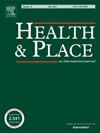在māmā感到安全的地方,劳动将取得进展:在初级生育中心建立出生地决策
IF 4.1
2区 医学
Q1 PUBLIC, ENVIRONMENTAL & OCCUPATIONAL HEALTH
引用次数: 0
摘要
生育干预率高是一个重大的健康问题。初级分娩中心是助产士主导的护理场所,分娩干预率低于医院。然而,在新西兰,医院分娩主导着出生地决策。对与四个初级分娩中心有关的24名保健工作者进行了深入访谈,目的是确定如何建立对初级分娩中心的信心。专题分析展示了助产士如何话语和视觉上重新将分娩作为一个正常的生理过程,挑战医院作为理所当然的护理场所。我们得出的结论是,助产士对出生的神经激素理解建立了对客户出生地本体的反应。本文章由计算机程序翻译,如有差异,请以英文原文为准。
Labour will progress where māmā feel safe: Constructing birth-place decision making in primary birth centres
High rates of intervention in birth is a significant health issue. Primary birth centres are midwife-led sites for care with lower rates of intervention in birth than hospitals. Yet hospital births dominate birthplace decision-making in New Zealand. In-depth interviews with 24 health workers associated with four primary birth centres aim to identify how confidence in a primary centre birth is built. Thematic analysis demonstrates how midwives discursively and visually re-centred birth as a normal physiological process challenging hospital as the taken-for-granted place for care. We conclude that midwives’ neurohormonal understandings of birth builds responsiveness to the birth-place ontologies of clients.
求助全文
通过发布文献求助,成功后即可免费获取论文全文。
去求助
来源期刊

Health & Place
PUBLIC, ENVIRONMENTAL & OCCUPATIONAL HEALTH-
CiteScore
7.70
自引率
6.20%
发文量
176
审稿时长
29 days
期刊介绍:
he journal is an interdisciplinary journal dedicated to the study of all aspects of health and health care in which place or location matters.
 求助内容:
求助内容: 应助结果提醒方式:
应助结果提醒方式:


